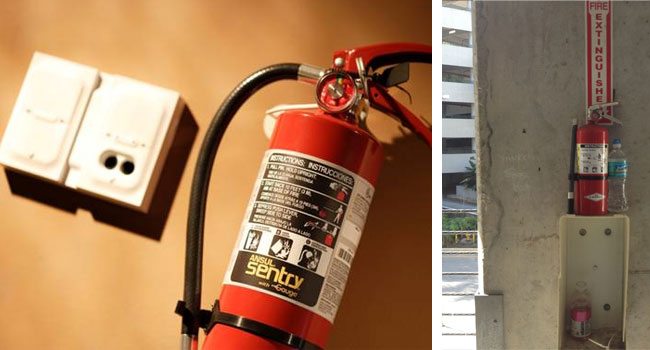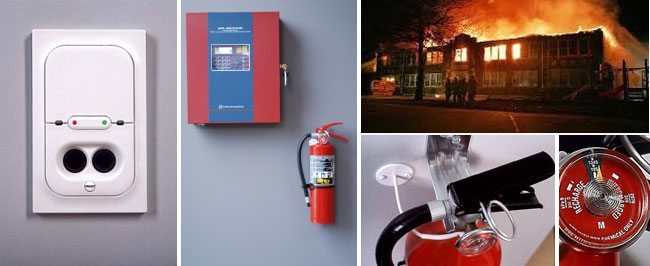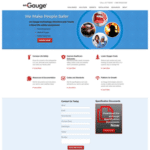We all know it’s important to inspect fire extinguishers regularly, to make sure they’re accessible, have enough pressure to put out a fire, and haven’t sustained damage that might make them explode. But how many of us actually remember to check every 30 days, the interval required by the National Fire Protection Association?
Hopefully, someone in your apartment or office building is on top of it. But there is another, more reliable option than manual inspections: an electronic monitoring system like the one from en-Gauge,
en-Gauge uses a combination of technologies to ensure each extinguisher is always in fire-fighting shape. First, an extinguisher is only useful if you can get to it, so a proximity detector is always watching to make sure the way is clear and sends an alert if there’s a prolonged blockage. Second, en-Gauge extinguishers are equipped with a digital pressure gauge that sends an alert whenever the pressure drops below optimum. Finally, an electronic tether connects the gauge to the wall, so the second someone pulls the extinguisher away, a circuit is tripped that triggers the building’s alarm system.
Often, that signal will be faster than a smoke detector, especially in large buildings like dorms, apartment blocks, warehouses and big box stores. “There are a lot of circumstances where someone can grab the extinguisher, fight the fire, and the alarm never goes off,” says en-Gauge CEO Brendan McSheffrey. By notifying authorities the moment an extinguisher is in use, he says, “we’re ensuring that people are not fighting fires on their own.”
Systems like this are reliable enough that many states and municipalities exempt electronically monitored extinguishers from manual inspection requirements, letting them go years between testing. In some places, like New Hampshire, these systems are even required for any new building that also requires a fire alarm system.


en-Gauge’s system can be hardwired into a building’s infrastructure, or retrofitted using wireless technology. The company also provides software to manage data and configure alerts, or can integrate with existing building monitoring software from Siemens, Honeywell, and others.
Connected pressure gauges and proximity sensors also show up in en-Gauge’s other products, including monitors for oxygen tanks, AEDs, first-aid kits, and crash carts in hospitals.
To learn more about their monitoring technologies, visit enGaugeInc.net.
